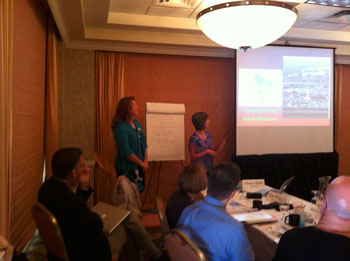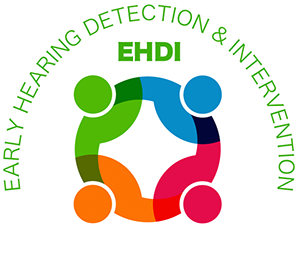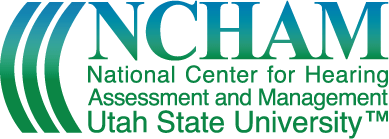Last Modified: 06/21/2023
VI. Tele-audiology Training

Remote pediatric audiology requires trained personnel at the spoke site and the hub site. It is recommended that initial training should occur in person, with follow up training sessions occurring remotely or in person, if necessary.
Training Should Encompass:
- Understanding the assistant’s role and the audiologist’s role
- Proper set up and management of equipment
- Strategies to troubleshoot equipment problems
- Preparing the child and family for the assessment
- Assessment procedures
- Infection control
- HIPAA compliance
- Completion of the designated follow up activities, e.g. releases of information, signed consent, and referrals
- Communication with the families prior to, during, and following the audiological session
- Establishing internet connection
Training at the Spoke Site
Identifying Staff
When identifying staff members at the spoke site, it is important to consider the staff’s level of comfort in interacting with the patient and family. The staff member should be a person who is trainable and who is able to follow instructions. Personnel at the spoke site are typically trained nurses or medical assistants who are familiar with standard protocols pertaining to patient confidentiality and professional behavior. You will also need to consider the staff member’s licensure and how billing for the appointment and services may be completed. Many sites have found it successful to have a “champion” staff member who will understand the importance of tele-audiology and advocate for tele-services. They will ensure proper procedures for tele-audiology appointments at the spoke site and have the skills and knowledge to work through barriers. It is also necessary to train back-up staff in case the “champion” or primary tele-audiology staff is unable to assist during a particular appointment.
Provision of Training
Consider providing on-site training to ensure that spoke site staff have a high level of comfort in working with the necessary equipment and performing the necessary tests (video otoscopy, tympanometry, OAEs, etc.). During training, consider dividing information into easily digestible pieces so that staff will not feel overwhelmed. Tele-audiology programs have developed ways to prompt the assistant to efficiently connect diagnostic equipment to the infant, such as color-coding of wires, creating graphics specific to the equipment for quick reference and clearly labeling disposables for ease of use. Additionally, the personnel at the spoke site require specific training for preparing the room, positioning of the caregiver and child for optimal evaluation and remote communications, and management of the equipment. As discussed earlier, the personnel at the spoke site also may play a critical role in documentation and verification.
Spoke site technicians should successfully demonstrate all responsibilities and technical procedures prior to performing an actual test on at least one infant before participating in a remote assessment.
In addition to on-site training, it may be helpful to provide staff with quick reference guides or videos with step-by-step instructions and visual aids on how to complete various parts of the appointment. These step-by-step instructions can be helpful for staff to review before an appointment, especially if they do not assist with tele-audiology appointments on a routine basis. Make sure the training materials are easily accessible so that staff may access them whenever needed. Lastly, consider providing regular practice sessions so that staff members maintain their skills and high level of comfort assisting with tele-audiology appointments.
Training for Audiologists at Hub Site
Audiologists also require training in the general procedures of tele-audiology. Specifically, the audiologist must ensure that they, too, abide by confidentiality and privacy procedures, know how to efficiently provide direction to the assistant, and know how to operate the technology.
Examples:
- Ontario, Canada “Infant Hearing Program (IHP) Remote Audiology Assessment” [PDF] policy manual is used in training of staff.
- The Role of Patient-Site Facilitators in Teleaudiology: A Scoping Review
- Quick Reference Guides from South Dakota:
- ABR Quick Reference Guide [PDF]
- ABR Electrode and Ear Insert Placement Quick Reference Guide [PDF]
- Diagnostic Audiology Quick Reference Guide [PDF]
- Equipment Set-Up Quick Reference Guide [PDF]
- OAE Quick Reference Quick [PDF]
- Otoscopy Quick Reference Guide [PDF]
- Tympanometry Quick Reference Guide [PDF]
- Video Examples from South Dakota
References
- Coco, L., Davidson, A. & Marrone, N. (2020). The role of patient-site facilitators on teleaudiology: A scoping review. American Journal of Audiology, 29(3S), 661-675. https://doi.org/10.1044/2020_AJA-19-00070
- Communication Support through Aids and Technology. (2018, October 11). Bone conduction [Video]. YouTube. https://www.youtube.com/watch?v=5eIhF1B-25A
- Communication Support through Aids and Technology. (2018, October 11). Infant otoscopy [Video]. YouTube. https://www.youtube.com/watch?v=a0o0TAqmSuE
- Communication Support through Aids and Technology. (2018, October 11). Placing electrodes [Video]. YouTube. https://www.youtube.com/watch?v=4E-xXkurP4o&t=7s
- Communication Support through Aids and Technology. (2018, October 11). Placing inserts [Video]. YouTube. https://www.youtube.com/watch?v=P9CltdLNLG4
- Communication Support through Aids and Technology. (2018, October 11). Removal of electrodes and inserts [Video]. YouTube. https://www.youtube.com/watch?v=viUgz6atgpU
- Communication Support through Aids and Technology. (2018, October 11). Scrubbing [Video]. YouTube. https://www.youtube.com/watch?v=RmwPUFg3XW4
- Communication Support through Aids and Technology. (2018, October 11). Swaddling [Video]. YouTube. https://www.youtube.com/watch?v=SXRrD3hCzNo


